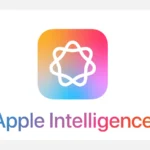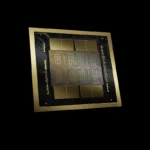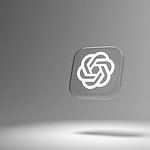Is your iPhone caller ID acting up? You’re not alone. Many iPhone users face this frustrating issue where the caller ID feature gets stuck on a spinning wheel or simply doesn’t work at all. The quickest fixes include turning on airplane mode for a few seconds, restarting your iPhone, or resetting your network settings if the problem persists.
This common problem can happen on any iPhone model, from older versions to the newest releases. Sometimes it’s related to your carrier settings, while other times it’s just a temporary software glitch. The good news is that most caller ID issues can be fixed without visiting an Apple Store.
When your iPhone can’t identify who’s calling, it’s more than just an annoyance—it’s a privacy and convenience problem you need to solve. Simple troubleshooting steps often work best, and we’ll walk you through them all in this guide.
iPhone Caller ID Not Working? Here’s How to Fix It
If your iPhone isn’t showing who’s calling — even for saved contacts — or if your name isn’t displaying when you call others, it’s likely a Caller ID issue. This can be caused by network glitches, privacy settings, or problems with your iPhone’s configuration. Here’s a full guide to troubleshoot and fix it.
1. Check If Caller ID Is Enabled on Your iPhone
Your phone has a built-in Caller ID setting that may have been accidentally turned off.
To check it:
- Go to Settings
- Tap Phone
- Tap Show My Caller ID
- Make sure the toggle is turned ON
If the option is grayed out or missing, your carrier may control this feature — more on that below.
2. Restart Your iPhone
Sometimes it’s just a temporary glitch. Restarting your phone can refresh the system and fix minor bugs affecting caller ID.
- iPhone with Face ID: Press and hold the Side Button + Volume Up (or Down) until you see the slider.
- iPhone with Home Button: Press and hold the Power Button until the slider appears.
3. Check for iOS Updates
Software bugs can interfere with features like Caller ID. Install the latest update:
- Go to Settings > General > Software Update
- Download and install if an update is available
4. Toggle Airplane Mode On and Off
This will refresh your network connection:
- Open Control Center
- Tap the Airplane icon
- Wait 10 seconds, then tap again to reconnect
5. Reset Network Settings
If your Caller ID isn’t showing names for saved contacts or keeps defaulting to “Unknown,” resetting your network settings can often clear things up:
- Go to Settings > General > Transfer or Reset iPhone
- Tap Reset > Reset Network Settings
- Enter your passcode to confirm
This won’t delete your data, but it will erase saved Wi-Fi networks and Bluetooth pairings.
6. Check Carrier Settings
Some carriers allow or restrict Caller ID manually. You may need to contact your carrier if:
- “Show My Caller ID” is missing from your settings
- You’re using dual SIMs, and one line hides Caller ID by default
- Your outgoing calls always show as “Unknown” or “Private”
You can also try dialing #31# before a number to toggle Caller ID on for a specific call.
7. For Incoming Calls Not Showing Names
If incoming calls show numbers instead of names, but those people are saved in your contacts:
- Make sure the contact isn’t duplicated or saved with a country code that differs from what’s stored
- Try deleting and re-saving the contact
- Sync your contacts again if you use iCloud:
- Go to Settings > [Your Name] > iCloud > Contacts and toggle it off and back on
8. Contact Your Carrier
If none of the above work, contact your mobile provider. Caller ID is a carrier feature, and sometimes they must enable it manually, especially for international roaming, VoIP lines, or prepaid plans.
Final Tip: Use a Third-Party Caller ID App
Apps like Hiya, Truecaller, or RoboKiller can enhance caller ID and block spam — especially if your issue is with identifying unknown callers, not just saved contacts.
Bottom Line: If your iPhone’s Caller ID isn’t working, it’s usually tied to a software glitch, settings issue, or your mobile carrier’s network. Try these steps, and if all else fails, your provider should be your next stop.
Key Takeaways
- Try turning on airplane mode briefly or restarting your iPhone to quickly fix most caller ID issues
- Check your caller ID settings and make sure the feature is properly enabled in your phone settings
- Refresh your contacts by pulling down on the contacts list and reset network settings for persistent problems
Understanding Caller ID on iPhone
Caller ID on iPhone helps users identify who is calling before answering. This feature displays names and numbers for incoming calls and controls what others see when you call them.
What is Caller ID?
Caller ID is a phone feature that shows information about who’s calling you. On iPhones, this typically displays the caller’s name and phone number on your screen when you receive a call.
If the number is in your contacts, your iPhone will show the name you’ve saved. For unknown numbers, you might see the city and state or just the phone number.
Caller ID works in two ways on your iPhone:
- Incoming Caller ID: Shows you who’s calling
- Outgoing Caller ID: Shows your info to people you call
This feature helps you decide whether to answer calls or send them to voicemail. It’s especially useful for avoiding spam calls or identifying important contacts.
How Caller ID Works on iOS
On iOS, Caller ID relies on your contacts list and carrier information. When someone calls, your iPhone checks if the number matches a contact. If it does, their name appears on your screen.
Your carrier plays a big role too. They send the caller’s number to your iPhone, which then looks for a match.
For outgoing calls, you can control your Caller ID settings through the Phone app. To hide your number:
- Go to Settings
- Tap Apps
- Select Phone
- Tap “Show My Caller ID”
- Toggle the switch off
Remember that some carriers might override these settings. Some services like doctors’ offices may also block their outgoing Caller ID information.
Common Caller ID Issues
Several problems can prevent Caller ID from working properly on your iPhone:
Contact name not showing:
- The caller’s number isn’t saved in your contacts
- Your contacts app needs to be refreshed
- SIM card problems might affect contact display
Technical issues:
- Outdated iOS version
- Incorrect network settings
- Carrier-related problems that affect Caller ID transmission
Sometimes the Caller ID screen gets stuck showing a spinning wheel instead of caller information. This often relates to carrier connectivity issues.
To fix most Caller ID problems, try:
- Updating to the latest iOS version
- Restarting your iPhone
- Checking for carrier setting updates
- Removing and reinserting your SIM card
Basic Troubleshooting Steps
When your iPhone caller ID isn’t working properly, several simple fixes can get it back up and running. These solutions range from checking your settings to making sure your device’s software is current.
Checking iPhone Settings
The first place to look when your caller ID isn’t working is in your iPhone settings. Many users don’t realize this feature can be turned off accidentally.
To check this:
- Open your iPhone Settings app
- Tap on “Phone”
- Look for the Show My Caller ID option
- Make sure the toggle is switched ON
If you see a spinning wheel when trying to access this setting, it might indicate a network connection issue. This problem appears on various iPhone models including iPhone 6, iPhone SE, iPhone X, and iPhone 15.
Sometimes the caller ID feature requires reactivation through your carrier. Try toggling airplane mode on and off to refresh your connection to the network.
Restarting Your iPhone
A simple restart can fix many iPhone problems, including caller ID issues. This helps clear temporary software glitches that might be affecting your phone’s functions.
For newer models (iPhone X, iPhone 15):
- Press and hold the side button and either volume button
- Drag the slider to power off
- Wait 30 seconds
- Press and hold the side button until the Apple logo appears
For older models (iPhone 6, iPhone SE):
- Press and hold the power button
- Drag the slider to power off
- Wait 30 seconds
- Press and hold the power button again
A restart refreshes system resources and can resolve the spinning wheel issue that sometimes appears when trying to access caller ID settings.
Updating iOS Software
Outdated iOS versions can cause various problems with your iPhone, including caller ID functionality. Apple regularly releases updates that fix bugs and improve features.
To check for updates:
- Connect to Wi-Fi
- Open Settings
- Tap General > Software Update
- If an update is available, tap Download and Install
Always back up your iPhone before updating. The process usually takes 15-30 minutes depending on your connection speed and iPhone model.
If you’re using an older iPhone (iPhone 6, iPhone SE), make sure it supports the latest iOS. Older devices may need alternative solutions if they can’t run current software.
Ensuring Contacts Are Correctly Saved
Caller ID relies on proper contact information. If contacts aren’t saved correctly, names won’t display when they call.
Tips for managing contacts:
- Make sure phone numbers include the country code (+1 for US)
- Verify numbers don’t have extra spaces or characters
- Check for duplicate contacts that might confuse the system
To refresh your contacts:
- Open the Phone app
- Pull down on the contacts list to refresh
- Close and reopen the Phone app
Some third-party apps might interfere with the contacts database. If you recently installed a new app, try temporarily disabling it to see if that resolves your caller ID issues.
Advanced Troubleshooting Techniques
When simple fixes fail to solve your iPhone caller ID problems, you’ll need to try more powerful solutions. These methods can fix deeper system issues that prevent caller ID from working properly on your device.
Reset Network Settings
If your iPhone caller ID still shows a spinning wheel or doesn’t display at all, resetting your network settings often fixes the problem. This process clears all saved Wi-Fi networks, cellular settings, and VPN configurations.
- Go to Settings > General > Transfer or Reset iPhone
- Tap Reset > Reset Network Settings
- Enter your passcode when prompted
- Confirm the reset
After the reset completes, your iPhone will restart. You’ll need to reconnect to Wi-Fi networks and re-enter passwords, but this often resolves stubborn caller ID issues.
This method works by clearing cached network data that might be corrupted. Many users report this fixes the problem when the caller ID screen gets stuck showing only a spinning wheel.
System Repair Tools
When network resets don’t work, specialized iOS system repair tools can fix deeper software issues affecting your caller ID function.
Several third-party programs can repair iOS without data loss:
- TunesKit iOS System Recovery
- Tenorshare ReiBoot
- iMyFone Fixppo
These tools can fix caller ID problems by repairing the iOS system while keeping your personal data intact. They work by reinstalling system files that control phone functions.
The repair process typically takes 10-30 minutes depending on your internet speed. Most tools offer a free trial version that lets you diagnose problems before deciding to purchase the full repair option.
Reaching Out to Tech Support
When all else fails, getting help from tech experts can solve even the most stubborn caller ID issues.
Contact options include:
- Apple Support: Schedule an appointment at an Apple Store Genius Bar
- Your Carrier: Contact your mobile provider’s tech support
- Online Services: Services like JustAnswer connect you with verified experts who can help remotely
Before contacting support, gather information about your:
- iPhone model and iOS version
- When the caller ID problem started
- Steps you’ve already tried
Many carrier-specific caller ID issues require help from your service provider. Sometimes the problem isn’t with your iPhone but with how your account is set up on their end.
Tech support can also determine if your problem stems from hardware damage that needs repair.
Network and Carrier Settings
Network and carrier settings play a crucial role in how caller ID functions on your iPhone. When these settings aren’t configured correctly, your phone may fail to display caller information properly.
Checking Carrier Updates
Outdated carrier settings can often cause caller ID problems on iPhones. These settings control how your device connects to your mobile network and handles basic functions like displaying caller information.
To check for carrier updates:
- Connect to Wi-Fi
- Go to Settings > General > About
- Wait about 10 seconds on this screen
If an update is available, you’ll see a prompt to update your carrier settings. Tap “Update” when asked. These updates are small and install quickly.
Some carrier updates happen automatically in the background. If you’re experiencing caller ID issues after a recent iOS update, it’s worth checking if your carrier settings are current.
Your date and time settings can also affect caller ID. Make sure your date and time are set correctly to avoid caller ID problems.
Adjusting ‘Show My Caller ID’ Setting
The “Show My Caller ID” setting controls whether your phone number appears when you call others. It can sometimes affect incoming calls too.
To check this setting:
- Open the Settings app
- Scroll down and tap Phone
- Look for Show My Caller ID
- Make sure it’s turned ON
If the setting is missing, it might be controlled by your carrier. Some carriers like Comcast or others manage caller ID settings through their network rather than the phone.
Try toggling the setting off and on again. This simple action sometimes resets the connection between your phone and the carrier’s caller ID system.
Contact Service Provider
When troubleshooting fails, your carrier may need to fix the problem on their end. Caller ID services are managed by your service provider, and sometimes issues occur in their systems.
Call your provider’s customer service and explain:
- When the problem started
- What troubleshooting you’ve already tried
- Whether the issue affects all calls or just some
Ask if:
- Your caller ID service is active on your account
- There are known outages affecting caller ID
- They need to reset something on their end
Some carriers offer additional caller ID services that go beyond the basic functions. These might include features that identify potential spam calls or provide enhanced caller information.
If your carrier is Comcast or another cable company providing phone service, they often have specific settings that need to be adjusted through their customer portal.
Handling Syncing Issues Across Devices
When your iPhone caller ID isn’t working properly, the problem may stem from syncing issues between your Apple devices. Many users encounter problems with call logs, contacts, and messages appearing on unwanted devices or not appearing at all.
iOS Device Syncing
If your call logs are showing up on another iPhone or iPad, you need to adjust your iCloud settings. This happens when multiple devices use the same Apple ID. To stop this sharing, go to Settings > Apple ID > iCloud. Tap “Show All” and find “Phone” in the list. Toggle it off to prevent call history from syncing across devices.
For contact syncing issues, check if Contacts is enabled in iCloud. Open Settings > your Apple ID > iCloud, then tap “See All” next to “Saved to iCloud” and make sure Contacts is turned on.
You can also manage call syncing through device-specific settings. For example, on an iPad, tap Settings > Phone and turn off the “Calls” option to stop receiving calls meant for your iPhone.
Troubleshooting iMessage and Text Messages Sync
When iMessage and text messages aren’t syncing properly between devices, first check your Apple ID. All devices must use the same Apple ID for iMessage to work correctly. Go to Settings > Messages > Send & Receive to confirm the correct account is being used.
If messages still aren’t syncing, try these steps:
- Turn iMessage off and on again (Settings > Messages)
- Check that your phone number is selected for “You Can Be Reached By iMessage At”
- Ensure “Text Message Forwarding” is enabled for your devices
- Verify all devices are connected to the internet
Sometimes restarting your iPhone can fix stubborn syncing issues. Hold the power button, slide to power off, wait 30 seconds, then turn it back on.
For caller ID problems specifically related to messaging, check that your phone number and email address are properly set up in your iMessage settings to ensure proper identification when connecting with others.
Resolving Caller ID Issues Specific to Models
Different iPhone models can experience unique caller ID problems based on their hardware capabilities and iOS compatibility. Each model requires specific troubleshooting approaches to address caller ID functionality issues.
Issues with iPhone SE
The iPhone SE series often faces caller ID challenges due to its combination of newer software and older hardware components. Users commonly report that contacts fail to appear during incoming calls.
To fix this issue on an iPhone SE, first check if your contacts are properly synced. Open the Contacts app and make sure all entries are up to date.
Network settings can also cause problems. Try toggling “Cellular” off to disconnect from the network completely, then turn it back on. This often resolves caller ID display issues.
For persistent problems, reset network settings by going to:
- Settings
- General
- Transfer or Reset iPhone
- Reset
- Reset Network Settings
Warning: This will erase all saved WiFi passwords, so have them ready to re-enter.
The smaller screen on the SE sometimes affects how caller ID information displays. Make sure text size settings are optimized for your viewing preferences.
Caller ID on iPhone 6
The iPhone 6 series runs older iOS versions which can lead to caller ID inconsistencies. These aging devices often need specific approaches to maintain proper caller ID functionality.
First, check if your carrier settings need updating. Go to Settings > General > About and wait for a potential carrier update notification. Outdated carrier settings are a common cause of caller ID failures on iPhone 6.
If problems persist, contact your mobile service provider directly. They might need to refresh your account settings on their end.
For app-related caller ID issues, try these steps:
- Force close the Phone app
- Restart your iPhone 6
- Check for any available iOS updates
Battery health can impact system functions on older models. If your iPhone 6 battery health is below 80%, consider replacement as system functions might be throttled.
Troubleshooting Caller ID on iPhone X
iPhone X models balance modern features with some unique caller ID challenges. Face ID integration sometimes conflicts with caller ID display during incoming calls.
Start by ensuring caller ID is enabled. On iPhone X, go to Settings > Phone > Show My Caller ID and toggle it on. If the toggle seems stuck, try refreshing your network connection.
For those using business apps like HubSpot, specific steps can help:
- Open the contact tab in your business app
- Pull down to refresh your contacts list
- Close and reopen the app
Face ID interruptions sometimes affect caller ID display. Make sure your Face ID setup is current and working properly.
iPhone X models released in certain regions may have carrier-specific caller ID settings. Check with your provider if region-specific settings need adjustment.
Caller ID Features on iPhone 15
The iPhone 15 comes with advanced caller ID capabilities but also unique challenges. The latest models offer enhanced spam filtering which can sometimes affect legitimate caller ID display.
If your iPhone 15 caller ID isn’t working properly, try these advanced fixes:
- Update to the latest iOS by going to Settings > General > Software Update
- Reset network settings if updates don’t help
- Check Focus mode settings, which might be filtering certain calls
The iPhone 15’s privacy features sometimes block caller ID information. Review your privacy settings under Settings > Privacy & Security to ensure call identification is permitted.
Pro Tip: The latest models support enhanced caller ID through carrier services. Contact your provider to verify you’re enrolled in their enhanced caller ID service.
For users experiencing caller ID issues after switching from Android, check that all contacts were properly transferred and formatted correctly. The iPhone 15 handles contact formatting differently than Android devices.
Handling Software Glitches and Bugs
Software issues are often behind iPhone caller ID problems. These problems can range from simple setting errors to more complex bugs in the iOS system itself.
Identifying Software Bugs
When your iPhone caller ID stops working, it’s important to first determine if you’re dealing with a software bug. After updating to iOS 18, many users have reported caller ID issues where the loading wheel spins continuously without displaying any information.
Check if the problem started after an iOS update. This timing often points to a software bug rather than a setting issue.
Look for patterns in the caller ID failure. Does it happen with all calls or just certain contacts? This helps narrow down the cause.
Try making calls from different phones to your iPhone. If none show caller ID information, the problem is likely with your device’s software.
Resolving Incorrect Settings
Many caller ID issues stem from wrong settings on your iPhone. Check if caller ID is turned on in your phone settings. Apple sometimes changes menu locations after updates.
To fix settings issues:
- Go to Settings > Phone > Show My Caller ID
- Make sure the toggle is switched ON
- Contact your carrier if the option is grayed out
Sometimes restarting your iPhone can fix minor setting glitches. Press and hold the side button and volume button, then slide to power off.
Network settings can also affect caller ID. Try resetting them by going to Settings > General > Reset > Reset Network Settings.
When to Expect a Software Patch
If your caller ID problem is caused by a bug in iOS 18 or another recent update, you may need to wait for Apple to release a fix. Apple typically addresses major bugs quickly.
Check Apple’s support forums for acknowledgment of the issue. If many users report the same problem, Apple is likely aware and working on it.
In the meantime, updating to the latest iOS version may help, as Apple often releases small patches between major updates.
For critical caller ID needs, you can try a temporary workaround like using a third-party calling app or asking important contacts to text before calling.
Beta program participants can report bugs directly to Apple, which may speed up the fix process for problems affecting many users.
Personalizing Caller ID and Privacy
Your iPhone gives you several options to control how your number appears to others and how incoming calls display on your screen. These settings balance convenience with privacy needs.
Managing Caller ID for Individual Contacts
Your iPhone’s contacts app offers ways to personalize how each person appears when they call you. You can add photos to contacts to make them appear when that person calls. This makes it easier to identify callers at a glance.
For important contacts, you can set custom ringtones and text tones. This helps you know who’s calling without even looking at your phone.
Some contacts might appear with company names or locations if this info is saved in your contacts. To fix issues with specific contacts not showing properly:
- Open the contact
- Tap “Edit”
- Make sure their phone number is formatted correctly
- Check that no duplicate entries exist
If certain contacts still don’t display correctly, try deleting and re-adding them to refresh their information.
Privacy Concerns with Caller ID
Privacy matters when it comes to phone calls. Your iPhone lets you hide your caller ID when making outgoing calls. This prevents others from seeing your number before answering.
To hide your caller ID:
- Go to Settings > Phone
- Tap “Show My Caller ID”
- Turn the switch off
Be aware that some people might not answer calls from hidden numbers. Many carriers and phone services now flag unknown numbers as potential spam.
Some services and emergency numbers will still see your number even when caller ID is hidden. This is for safety reasons. Your carrier might also charge fees for hiding your caller ID on a permanent basis.
If you’re getting unwanted calls, consider using your iPhone’s “Silence Unknown Callers” feature instead of hiding your own number.
Customizing Caller ID Display
You can control how caller info appears on your screen. If your iPhone caller ID isn’t working, several fixes might help.
First, check carrier settings. Go to Settings > General > About and wait for any carrier updates to appear. Outdated carrier settings often cause caller ID problems.
Sometimes a spinning wheel appears when trying to view caller ID settings. If this happens, toggle airplane mode on and off, then try again.
Recent iOS updates like 18.2.1 have caused caller ID issues for some users. If problems started after an update, contact Apple Support for specific guidance.
Your phone can show business names instead of numbers for recognized companies that call you. This feature uses a database that updates periodically when your phone has an internet connection.
Frequently Asked Questions
iPhone caller ID issues can be frustrating when they prevent you from identifying who’s calling. Many common problems have simple fixes that don’t require technical expertise.
Why are incoming calls not displaying names from my contacts on iPhone?
When your iPhone doesn’t show contact names for incoming calls, it could be due to outdated contact information. Try refreshing your contacts by toggling Contacts in iCloud settings off and back on.
Your contacts might not be syncing properly across your devices. Check if your contacts are properly synced with your phone by going to Settings > Your Name > iCloud > Contacts.
Sometimes carrier issues can affect caller ID functionality. Contact your mobile service provider to verify everything is configured correctly on their end.
How can I troubleshoot an iPhone that isn’t showing caller ID?
Start by turning caller ID off and back on. Go to Settings > Phone > Show My Caller ID, toggle it off, wait a few seconds, then toggle it back on.
Try removing and reinstalling your SIM card. Power off your phone first, then use the SIM ejector tool to carefully remove and reinsert the SIM card.
If basic fixes don’t work, try resetting your network settings. Go to Settings > General > Transfer or Reset iPhone > Reset > Reset Network Settings.
What steps should be taken if ‘Show My Caller ID’ keeps spinning on an iPhone?
If you see a constant spinning wheel when trying to access your caller ID settings, try turning on Airplane Mode for about 30 seconds, then turn it off again. This often resolves connectivity issues.
Some users report that turning off cellular data temporarily helps the phone connect to carrier settings. After turning it back on, check the caller ID settings again.
Make sure your iOS is up to date. Outdated software can sometimes cause conflicts with carrier settings and network features.
How can one activate caller ID for incoming calls on an iPhone?
Caller ID for incoming calls is typically enabled by default on iPhones. To confirm it’s working, check your carrier settings are updated by going to Settings > General > About.
If you’ve recently changed your SIM card or carrier, you might need to update your settings. Some users with new SIM cards report caller ID issues after iOS updates.
Contact your carrier to verify your plan includes caller ID services, as some basic plans might not include this feature.
What could cause caller ID to suddenly stop functioning correctly on an iPhone?
Recent iOS updates can sometimes affect caller ID functionality. If problems started after an update, check for a newer iOS version that might fix the bug.
Network settings changes or carrier updates might disrupt caller ID services. Try updating your carrier settings or performing a network settings reset.
SIM card issues can cause unexpected problems. If your caller ID stopped working suddenly, try cleaning your SIM card contacts and reseating it in your device.
How is ‘No Caller ID’ on incoming calls resolved on an iPhone?
The “No Caller ID” issue often originates from the caller’s end, not your phone. The person calling you may have their caller ID blocked or hidden intentionally.
Some calls from businesses, government agencies, or automated systems may appear without caller ID. This is normal and cannot be changed on your end.
If you’re receiving unwanted “No Caller ID” calls, you can use the iPhone’s built-in call blocking or install third-party call filtering apps to screen these calls.







